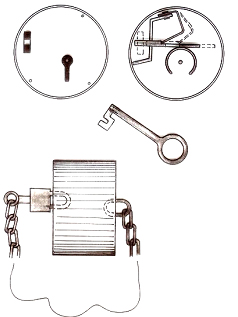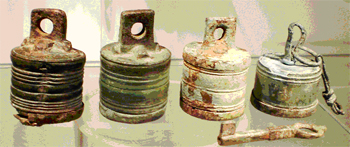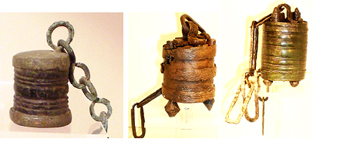Roman padlocks
The practical padlock is also a Roman innovation. The first padlocks, requiring a metal housing and sprung steel, were invented by Roman engineer-smiths some time around 100-200 AD.
 The simple, practical function of these early padlocks cemented their basic design – lock body, shackle, steel spring and key. The basic technical concept of the first door locks, a bolt that can slide in two directions via a key, is also found in the first padlocks. In fact, padlocks reflect great variations in design and technique, making them a vital part of our technological history. Lock bodies and shackles can be adapted aesthetically and socially through adornment and choice of materials. The advantages of padlocks compared to door locks is that they are usually small, can tolerate rough handling, are easy to use and are cheaper than door locks. A drawback is that they need to be used with some kind of iron fittings.
The simple, practical function of these early padlocks cemented their basic design – lock body, shackle, steel spring and key. The basic technical concept of the first door locks, a bolt that can slide in two directions via a key, is also found in the first padlocks. In fact, padlocks reflect great variations in design and technique, making them a vital part of our technological history. Lock bodies and shackles can be adapted aesthetically and socially through adornment and choice of materials. The advantages of padlocks compared to door locks is that they are usually small, can tolerate rough handling, are easy to use and are cheaper than door locks. A drawback is that they need to be used with some kind of iron fittings.
 |
Roman barrel padlock, about 10 cm long with a diameter of 5.5 cm. The chain is about 40 cm long.
Sketches by the author. |
 |
| Bronze Roman barrel padlocks for turning key. From the early imperial era. Hanns Schell Collection, Graz. Photo by the author. |
 |
| Bronze Roman barrel padlocks for turning key. From the early imperial era. Hanns Schell Collection, Graz. Photo by the author |